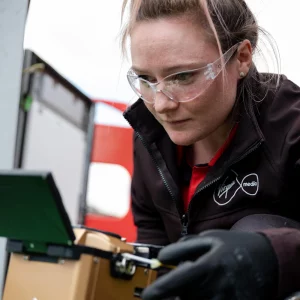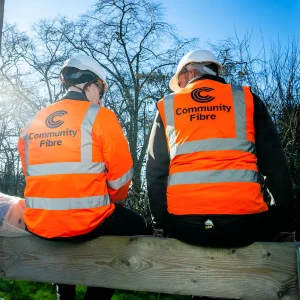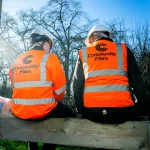Sponsored Links
UPDATE Ofcom Examines UK Super Fast Fibre Optic Broadband Technology Methods
Posted: 15th Dec, 2009 By: MarkJ
 Ofcom has published several new reports today that chart the different methods of deploying fibre optic broadband ISP services in the UK and their respective market impacts. The reports place a great deal of focus on BT, IFNL and i3 Group and their use of Gigabit Passive Optical Network (GPON) technology for UK 100Mbps FTTH / P deployments.
Ofcom has published several new reports today that chart the different methods of deploying fibre optic broadband ISP services in the UK and their respective market impacts. The reports place a great deal of focus on BT, IFNL and i3 Group and their use of Gigabit Passive Optical Network (GPON) technology for UK 100Mbps FTTH / P deployments.The regulator also wishes to understand whether a regulated GPON unbundling ( LLU ) requirement would prove effective in supporting competition on GPON fibre-to-the-home ( FTTH ) networks. GPON, unlike point-to-point (PTP) fibre architectures, are apparently not well suited to an open unbundled network because of their shared nature.
Ofcom published three reports about super-fast broadband technology:Sadly it's quite difficult to summaries these somewhat technical reports into a plain English form that everybody can understand. However there are some bits that need little explanation, such as Ofcom's predictions of retail prices.
• Competitive models in Gigabit Passive Optical Networks (GPON) examines the economics of different super-fast broadband technologies.
• GPON Market Review looks at GPON technology and current examples of its deployment around the world.
• Business to Business Interfaces: Meeting the needs of Next Generation Access considers how the way that Communications Providers buy and sell wholesale broadband products, like Local Loop Unbundling and Wholesale Line Rental, may have to develop to meet the needs of super-fast broadband.
http://www.ofcom.org.uk/research/technology/research/emer_tech/sbt/
Results of the cost modelling
[THE] cost modelling showed that the recovered cost per line per month for the Base scenario is GBP22 for a retail market with three operators. This figure is sensitive to the amount of existing duct that can be reused. The cost per line for 25% coverage ranges from GBP27 per month if ‘low’ amounts of duct are available, to GBP15 if an operator selectively deploys in available duct. Our result for medium duct availability (GBP22) compares well with BT’s proposed pricing for GEA, which is GBP25 per month for a 100Mbit/s peak rate product.
[THE] cost modelling showed that the recovered cost per line per month for the Base scenario is GBP22 for a retail market with three operators. This figure is sensitive to the amount of existing duct that can be reused. The cost per line for 25% coverage ranges from GBP27 per month if ‘low’ amounts of duct are available, to GBP15 if an operator selectively deploys in available duct. Our result for medium duct availability (GBP22) compares well with BT’s proposed pricing for GEA, which is GBP25 per month for a 100Mbit/s peak rate product.
It's noted that the cost of passing and connecting homes via FTTC / VDSL is significantly less than any of the GPON unbundling scenarios. This is obvious because FTTC uses the existing “last mile” copper infrastructure to reach homes, which saves a lot of money but restricts its best possible speed; 'up to' 40Mbps initially and 60Mbps in the future.
Note the 'up to' aspect because the VDSL / VDSL2 technology used in FTTC is not perfect and suffers from degradation over longer distances, while a direct FTTH fibre optic link to homes and businesses will not be constrained by any old copper wires but this costs a lot more. It's suggested that future enhancements could bring down the cost of FTTH to £7 per month by using lower-cost ‘mature’ WDM PON equipment, though this is not expected to be available before 2015–2016.
UPDATE - 23rd December 2009
Fibre to the home (FTTH) network specialists Fibrecity, part of the i3 Group believes the findings of the recent Ofcom reports¹ that ‘Gigabit Passive Optical Networks (GPON) does not support unbundling due to the high number of end users sharing a single fibre’ to be accurate.
Adrian Crook, development director at Fibrecity Holdings said:
“The report shows how easy it is to get fibre deployment commercially wrong and how some of the models in contention will deliver an inadequate service. The GPON model means that fibre connections become more contented the more end-users there are sharing a single fibre.
The contended connection means that the speed of their broadband will be compromised which defeats the object of fibre connectivity. In addition, when a large number of homes share a dedicated fibre and for any reason it fails, a lot of people are going to be effected.
The key to success for all FTTH builds is developing a viable, commercially neutral platform which allows service providers to easily interface with it. This will enable consumer choice and new services to be introduced easily. Fibrecity has reinvented the next generation access model by launching a portal which supports shared access.
i3 Group has established Opencity Media as the interface between the service and content providers and the Fibrecity infrastructure – the portal. It’s a similar approach to iphone apps and Google.”
“The report shows how easy it is to get fibre deployment commercially wrong and how some of the models in contention will deliver an inadequate service. The GPON model means that fibre connections become more contented the more end-users there are sharing a single fibre.
The contended connection means that the speed of their broadband will be compromised which defeats the object of fibre connectivity. In addition, when a large number of homes share a dedicated fibre and for any reason it fails, a lot of people are going to be effected.
The key to success for all FTTH builds is developing a viable, commercially neutral platform which allows service providers to easily interface with it. This will enable consumer choice and new services to be introduced easily. Fibrecity has reinvented the next generation access model by launching a portal which supports shared access.
i3 Group has established Opencity Media as the interface between the service and content providers and the Fibrecity infrastructure – the portal. It’s a similar approach to iphone apps and Google.”
Search ISP News
Search ISP Listings
Search ISP Reviews
Latest UK ISP News








Cheap BIG ISPs for 100Mbps+
150,000+ Customers | View More ISPs
Cheapest ISPs for 100Mbps+
Modest Availability | View More ISPs
Latest UK ISP News
Helpful ISP Guides and Tips
Sponsored Links
The Top 15 Category Tags
- FTTP (6802)
- BT (3882)
- Politics (3076)
- Business (2767)
- Openreach (2663)
- Building Digital UK (2513)
- Mobile Broadband (2476)
- FTTC (2142)
- Statistics (2130)
- 4G (2093)
- Virgin Media (2026)
- Ofcom Regulation (1780)
- 5G (1733)
- Fibre Optic (1604)
- Wireless Internet (1595)
Sponsored
Copyright © 1999 to Present - ISPreview.co.uk - All Rights Reserved - Terms , Privacy and Cookie Policy , Links , Website Rules






























